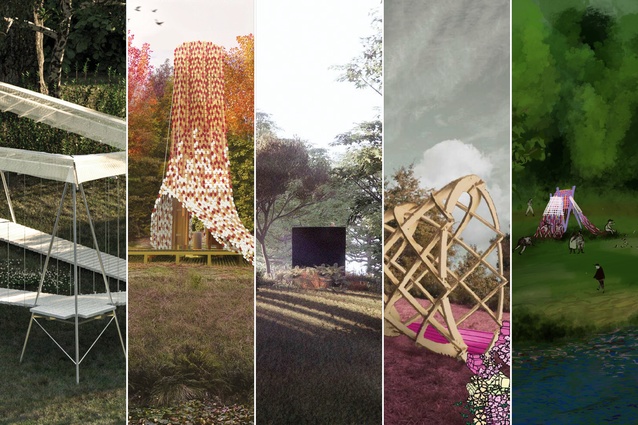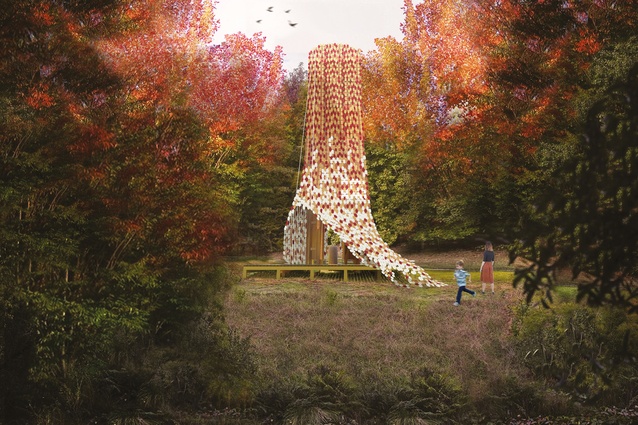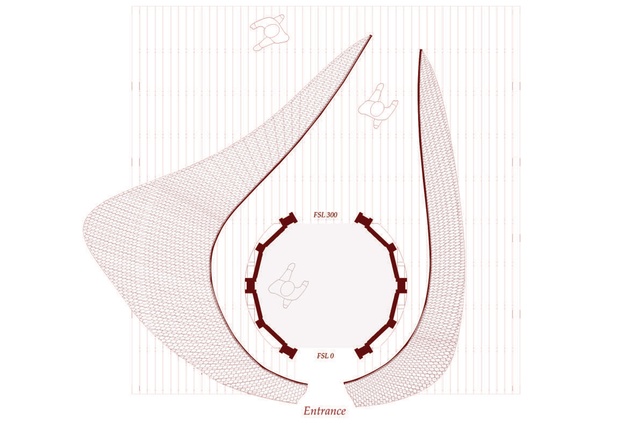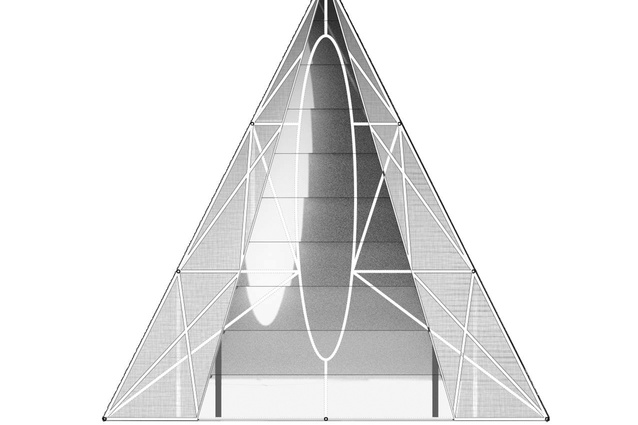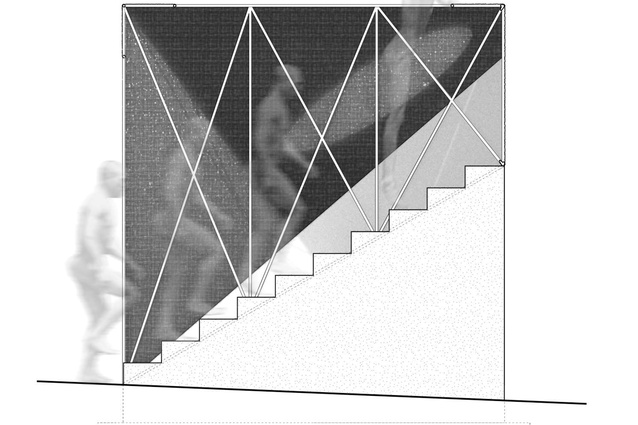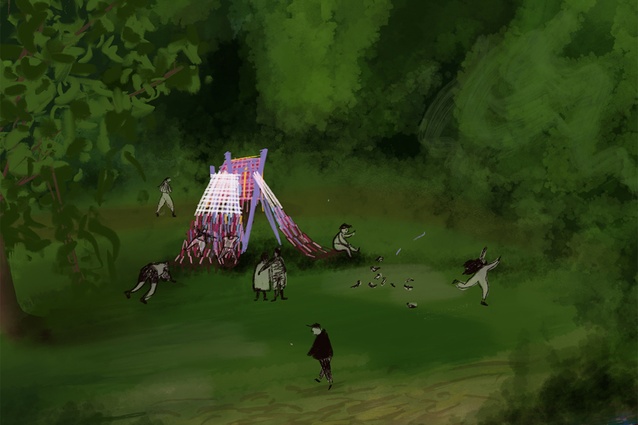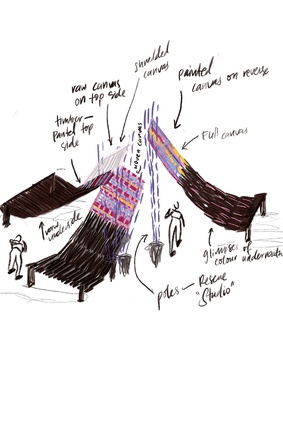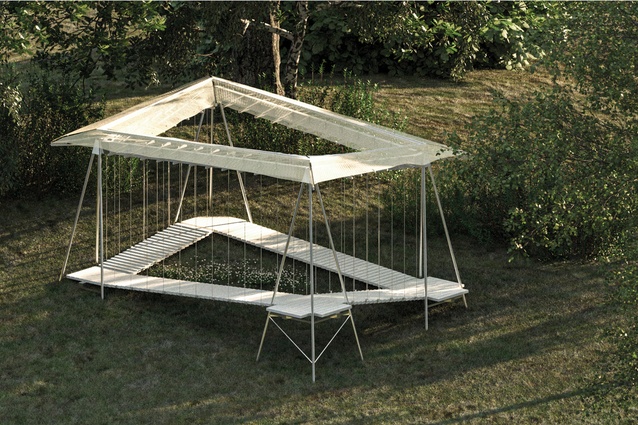Five Folly finalists selected for Brick Bay
The Brick Bay Folly programme presents students and graduates of architecture and design with a unique opportunity – to examine architectural ideas at a handmade scale while also encapsulating the zeitgeist of the time.
In recent years, a commitment to environmental responsibility has seen the use of reclaimed materials both honouring those follies that have gone before and, at the same time, reducing waste. All are further united each year in their call for contemplation – of our history, our surroundings, our preconceptions, and our past and future actions.
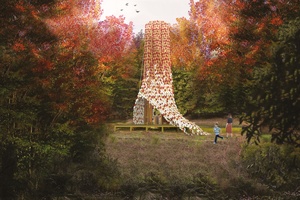
Dance of the Follyage is designed to resemble a mound of autumn leaves draped over a hollow tree trunk. This ‘dress’ reflects the autumnal red, yellow and orange hues of the surrounding maple trees, as its silhouette dances and sways in an act of temporal performance. The notion of decomposition is intrinsic to the narrative, as the follyage decomposes in a literal sense, through the act of people unhooking engraved leaf pieces from the folly dress, in time with the passing seasons. Each visitor is encouraged to take one of the folly’s white leaves and either leave their mark inside the trunk or take the leaf with them, as a memento. Over time, the folly loses its outer dress of leaves, revealing its skeleton membrane: the leafcatcher woven net beneath.
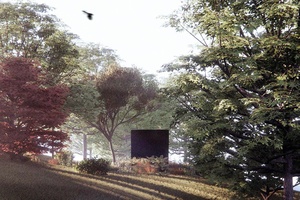
According to the Fresnel effect, the amount of light reflected from a surface depends on the viewing angle. The Fresnel folly is a deceiving viewing device, derivative of sacred geometries – an ellipse, a square and a triangle – in two dimensions yet, when investigated in three dimensions, it performs architectural theatrics. Composed of only a stair, two walls, a roof and a window, the 3x3-metre hessian-covered black abyss is intentionally cut and dry but rigorously intricate. The folly’s wall and roof do not form a cube but rather a point, the aperture is not circular but rather an ellipse, and the stairs do not form an equilateral triangle; however, from certain viewing points, they work their magic. Fresnel intentionally deprives spectators of the visual senses on approach, in complete contrast to the typical role of the architect.
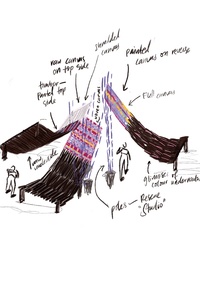
Femme-ly Velues is a small family of looms, huddled in a clearing. The base of the structure is knitted together using reclaimed timber from the previous folly, The Nest, some re-sanded and adorned with lively pink, yellow, purple and blue, others left with the stain in-situ, to reference heirlooms passed down from the ancestral folly. Each row of the looms resembles a line of stitching, threaded together tightly using a single metal rod, woven into the timber. At the top of each loom, a decorated canvas is folded over the support structure, a drawing of colourful geometries informed by the woven geometries produced using the loom. Femme-ly Velues aims to reinterpret the tradition of marrying textile and construction, acknowledging the heritage of textile craft among women, while simultaneously challenging the Western perception of textile craft being assigned to simple ornaments hung within the built environment.

Viewed from a distance, Gelato Waste Stream appears to depict a summery indulgence but, on closer inspection, the melting gelato spilling from the plywood waffle cone is a pile of rubble – leftover construction waste, abandoned piles of concrete and debris carelessly left scattered on the landscape – semi-concealed by flowers, which appear to have been born from it. The considered prefabricated waffle cone construction acknowledges the industry’s sustainable efforts around quality project management, life-cycle analysis and conscious design. But, through its depiction of a careless accident, a dropped ice cream, the folly highlights the action still needed around the major issue of unforeseen and accidental waste within the construction industry.
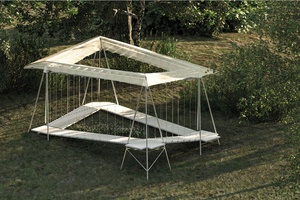
Millais’ Ophelia was once regarded as one of the most accurate and elaborate studies of nature ever made. Its folly namesake, Perch & Promenade: A Folly named Ophelia, provides a further opportunity to draw inspiration from nature by creating a gently elevated structure that offers generous views of the pond and the surrounding trees as well as a sheltered space for rest. The continuous, undulating platform is formed by a gradual, footbridge-like ramp connected by tensile wires, which invites visitors to slow down and engage with the landscape. The structure’s sense of lightness and transparency is awakened by the movement of people and its interaction with the wind, the rain and the creatures of the landscape.
The winning folly will be selected later this year and officially opened at Brick Bay in May 2024.
This year’s judges are Pip Cheshire from Cheshire Architects, Steve Cassidy from Cassidy Construction, Keith Mann from Unitec, Karen Warman from Resene (represented by Karmen Hoare), Peter Boardman from Structure Design, Chris Barton from Architecture NZ, Richard and Anna Didsbury from Brick Bay, and William Creighton from last year’s winning folly team, who created Te Reo o te Hau – Voice of the Kokohau.
Brick Bay Folly is sponsored by Resene, Cassidy Construction, Cheshire Architects, Structure Design, Unitec, Brick Bay, Sam Hartnett Photography and Architecture NZ/ArchitectureNow.


